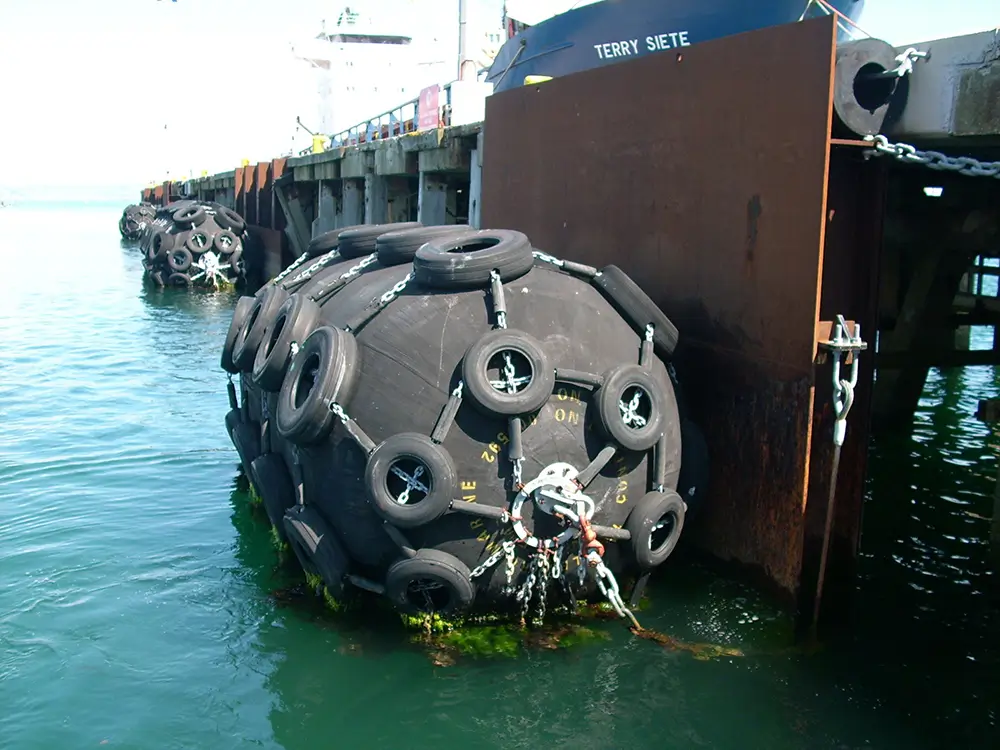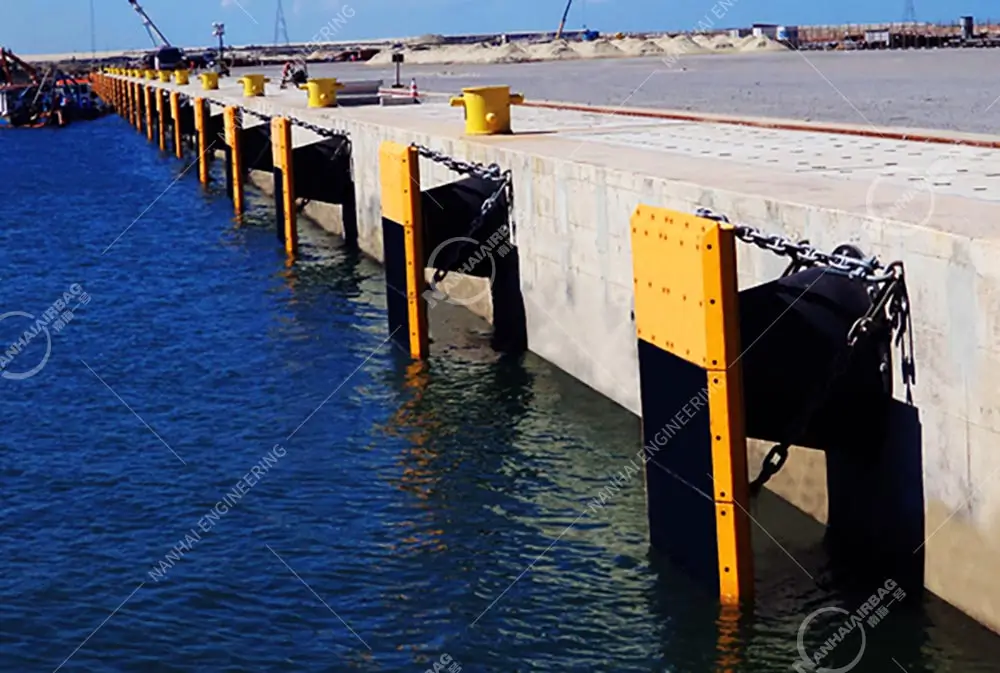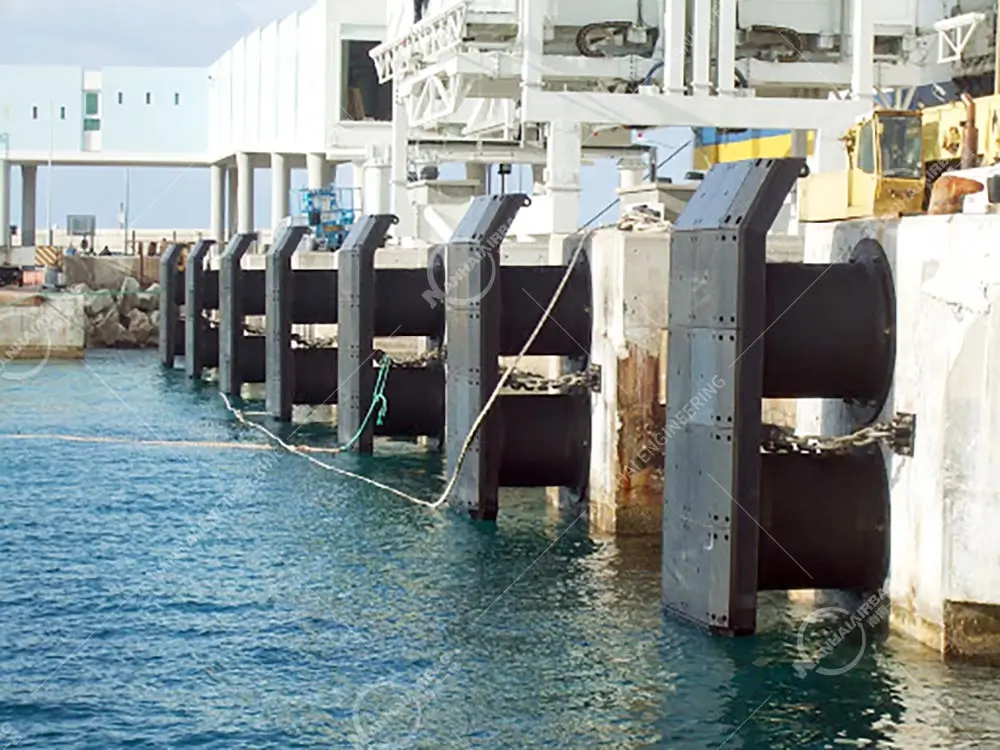Quels types de défenses peuvent être utilisés dans les opérations de navire à navire ?
08/29/2025Que signifie l'éolien en mer ?
09/01/2025Pourquoi la vulcanisation à chaud est-elle essentielle pour les défenses marines en caoutchouc ?
Lorsqu'il s'agit de protéger les navires, les quais et les structures en mer, défenses marines en caoutchouc sont les héros méconnus. Ils absorbent l'énergie d'impact, réduisent les dommages structurels et assurent la sécurité de tous pendant les opérations d'accostage et de transbordement. Mais il y a une chose que beaucoup d'acheteurs et d'ingénieurs négligent : comment ces ailes sont fabriquées compte autant que leur taille ou leur forme.
Au cœur des défenses marines en caoutchouc de haute qualité se trouve un processus de fabrication essentiel : la fabrication des défenses en caoutchouc. vulcanisation à chaud. Si vous vous êtes déjà demandé pourquoi certaines ailes durent plus de dix ans alors que d'autres commencent à s'écailler, à se fissurer ou à fuir après seulement quelques années, la vulcanisation à chaud est souvent le facteur décisif.
Dans cet article, nous allons expliquer ce qu'est la vulcanisation à chaud, comment elle fonctionne et pourquoi elle joue un rôle essentiel dans la durabilité, la sécurité et les performances de vos défenses marines en caoutchouc.





1. Comprendre les défenses marines en caoutchouc et leur rôle
Les défenses marines en caoutchouc sont installées le long des quais, des murs de quai et des coques de navires pour absorber l'énergie de la collision et prévenir les dommages structurels. Sans eux, l'amarrage d'un grand navire ou les transferts de navire à navire (STS) seraient beaucoup plus risqués, plus coûteux et potentiellement désastreux.
On les trouve partout, dans les ports à conteneurs et les terminaux GNL, dans les bases navales et sur les plates-formes offshore. Selon l'application, il en existe plusieurs types :
- Garde-boue en forme de cône - Grande absorption d'énergie et faible force de réaction
- Défenses de cellules - Largement utilisé dans les terminaux à conteneurs et les postes d'amarrage à usage intensif
- Garde-boue en arc de cercle - Compact, économique et polyvalent
- Défenses pneumatiques - Gonflable, idéal pour les opérations STS
- Défenses remplies de mousse - Léger et insubmersible, adapté aux conditions offshore
Si les formes et les designs varient, une chose est constante : la qualité du caoutchouc et la force d'adhérence définissent la performance. Et c'est là que la vulcanisation à chaud fait toute la différence.
2. Qu'est-ce que la vulcanisation à chaud ?
La vulcanisation à chaud est un procédé contrôlé processus de chaleur et de pression utilisée pendant la fabrication pour transformer le caoutchouc brut en un matériau solide, élastique et durable. Elle consiste à réticuler les chaînes de polymères à l'aide de soufre ou d'autres agents de vulcanisation à des températures et des pressions élevées, généralement à l'intérieur d'un moule.
Il s'agit en quelque sorte de "cuire" le caoutchouc. Avant la vulcanisation, le caoutchouc naturel ou synthétique est mou, collant et instable. Après la vulcanisation à chaud, le matériau devient.. :
- Plus fort et plus résistant - meilleure résistance à la déchirure et à la fatigue
- Elastique mais stable - il reprend sa forme même après une forte compression
- Résistant aux produits chimiques - résiste à l'eau salée, à l'exposition aux UV et à l'ozone
- Longue durée - fonctionne de manière constante pendant des années d'exploitation
Pour les défenses marines en caoutchouc, la vulcanisation à chaud ne se contente pas d'améliorer les propriétés du matériau, elle permet également de réduire les coûts. garantit que les multiples couches de caoutchouc, les tissus de renforcement et les inserts en acier sont parfaitement collés les uns aux autres. C'est une chose que les méthodes de collage à froid ne peuvent tout simplement pas égaler.
3. Pourquoi la vulcanisation à chaud est-elle importante pour les défenses marines en caoutchouc ?
3.1. Intégrité structurelle sans faille
Les défenses marines en caoutchouc sont souvent constituées de plusieurs couches de caoutchouc renforcées par du tissu ou des plaques d'acier. Vulcanisation à chaud fusionne ces couches en une structure unique et solide. Cette intégration transparente réduit considérablement le risque de délamination ou épluchagemême sous des charges extrêmes ou des impacts répétés.
Sans vulcanisation à chaud, les joints collés ont tendance à devenir des points faibles. Au fil du temps, l'exposition à l'eau salée, les cycles de température et les rayons UV peuvent provoquer la défaillance de ces joints, ce qui entraîne des réparations coûteuses ou un remplacement prématuré.
3.2. Résistance mécanique plus élevée
Lors de l'accostage, un grand navire de charge peut générer des centaines de tonnes d'énergie cinétique. Pour faire face à ce stress, les défenses doivent offrir résistance exceptionnelle à la traction et à la déchirure. La vulcanisation à chaud améliore ces propriétés en créant une couche d'ozone. réseau moléculaire densément réticulépermettant au caoutchouc d'endurer des forces de compression massives sans déformation permanente.
En termes simples, les ailes vulcanisées à chaud sont plus solides, plus résistantes et moins susceptibles de se fissurer sous l'effet de la pression.
3.3. Absorption cohérente de l'énergie
L'une des fonctions les plus importantes d'une défense marine en caoutchouc est la suivante absorber l'énergie de manière prévisible. La vulcanisation à chaud confère au caoutchouc sa "mémoire" élastique, ce qui lui permet de se comprimer et de rebondir de manière fiable, choc après choc.
Cette constance est vitale pour la sécurité. Si une défense absorbe moins d'énergie que prévu en raison d'une mauvaise fabrication, les navires et les postes d'amarrage risquent davantage d'être endommagés. Avec les défenses vulcanisées à chaud, vous obtenez des performances reproductibles et fiables à chaque fois.
3.4. Résistance supérieure aux environnements marins difficiles
Les environnements marins sont impitoyables - l'eau salée, l'ozone, les rayons UV et les températures extrêmes attaquent constamment le caoutchouc exposé. La vulcanisation à chaud améliore considérablement la résistance du matériau :
- Corrosion par l'eau salée
- Craquage de l'ozone
- Dégradation par les UV
- Fluctuations extrêmes de la température
Cela signifie que les défenses en caoutchouc marin vulcanisées à chaud conservent leur intégrité et leur capacité d'absorption d'énergie bien plus longtemps que celles fabriquées par collage à froid ou par des méthodes de durcissement à plus basse température.
3.5. Meilleure étanchéité des défenses pneumatiques
Pour les ailes pneumatiques, l'étanchéité à l'air est essentielle. Même une petite fuite peut compromettre les performances et la sécurité. La vulcanisation à chaud garantit que la vessie intérieure et les couches de caoutchouc extérieures sont bien étanches à l'air. collé sans discontinuitéréduisant drastiquement le risque de fuites d'air et infiltration d'eau.
Cela se traduit directement par des coûts de maintenance réduits et une durée de vie opérationnelle plus longue.
4. Conseils pratiques pour les acheteurs et les ingénieurs
Si vous êtes responsable de l'approvisionnement en défenses marines en caoutchouc, voici quelques conseils simples pour vous assurer d'obtenir la meilleure qualité :
- Demande de renseignements sur le processus de vulcanisation - Vérifiez toujours que le fabricant utilise vulcanisation à chaud et demander de la documentation.
- Demander des données sur les tests de performance - Les résultats de l'absorption d'énergie, de la force de réaction et de la récupération de la compression doivent être disponibles.
- Rechercher des certifications tierces - Les fournisseurs réputés fournissent des rapports d'essai conformes aux normes ISO ou AIPCN.
- Tenir compte du coût total de possession (TCO) - Les ailes vulcanisées à chaud peuvent coûter un peu plus cher au départ, mais elles permettent d'économiser de l'argent à long terme grâce à la réduction du nombre de réparations et à une durée de vie plus longue.
5. Foire aux questions (FAQ)
Q1. Comment la vulcanisation à chaud affecte-t-elle la durée de vie des ailes ?
La vulcanisation à chaud améliore considérablement la résistance à la fatigue, ce qui permet aux défenses marines en caoutchouc de durer des années de plus dans des conditions marines difficiles.
Q2. Puis-je réparer une aile en utilisant la vulcanisation à chaud sur place ?
En général, non. La véritable vulcanisation à chaud nécessite un équipement spécialisé et des conditions contrôlées, qui ne sont généralement disponibles que lors de la fabrication.
Q3. Comment puis-je vérifier le processus de vulcanisation d'un fabricant ?
Demandez les courbes de durcissement, les certificats des matériaux et les rapports d'essai de tiers concernant la résistance à la traction, la résistance à la déchirure et l'absorption d'énergie.
Q4. Les ailes vulcanisées à chaud valent-elles le prix plus élevé ?
Absolument. Bien que le coût initial soit légèrement plus élevé, le une durée de vie plus longue et réduction de la maintenance en font un meilleur investissement.
6. Conclusion
Lorsqu'il s'agit de défenses marines en caoutchoucLa qualité n'est pas seulement une question de taille, de forme ou même de taux d'absorption d'énergie. comment ils sont fabriqués. La vulcanisation à chaud est l'épine dorsale des défenses durables, fiables et performantes.
En choisissant des ailes fabriquées selon les techniques de vulcanisation à chaud appropriées, vous investissez dans une sécurité à long terme, des coûts de maintenance réduits et une meilleure protection pour les navires et les infrastructures. Pour les opérations critiques telles que les terminaux GNL, les plates-formes offshore ou les transferts STS, il n'est tout simplement pas possible de prendre le risque de rogner sur la qualité de fabrication.
